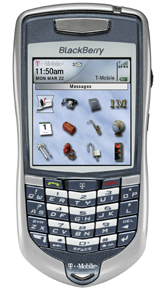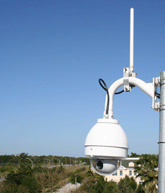In the golden days of broadcasting, alerting the populace to an impending disaster was easy. With only three major television networks, and a limited number of radio stations, the government could simply send an electronic warning to those media outlets, which would relay the message to their audiences. Everyone of a certain age remembers the tests of the emergency broadcast system.But the conduits of communications have multiplied exponentially. People watching television could be tuned in to any one of hundreds of channels. They could be visiting one of millions of Web sites, or communicating via cell phones, pagers or chat rooms. How can the government alert the populace to, for instance, a terrorist attack?This was one of the many technology challenges the country had to face after Sept. 11, 2001. Changing threats demand new capabilities, and government, along with industry, poured money into fresh technology initiatives.The events of Sept. 11 'changed the dynamics of what we need to do,' said Ann Buckingham, deputy director of the Federal Emergency Management Agency's Office of National Security Coordination.'We have entered into a period over these past five years that has been almost totally unlike anything we have been through in the past,' said Jules Duga, a senior researcher at Battelle Memorial Institute of Columbus, Ohio. Among other things, Battelle runs several labs for the Energy Department.Duga compiles an annual report on R&D spending in both the private and public sectors. While federal spending has grown modestly in the last five years, the shift of funds to counterterrorism work has been noticeable.[IMGCAP(2)]'There has been a concentration of funding in detection and amelioration of potential impacts of terrorist attacks,' Duga said. 'There's [also] been a lot that went into prevention by enhancing technologies for surveillance and intelligence.'Five years later, several new technology initiatives are beginning to bear fruit.When a terrorist attack or natural disaster occurs, warning citizens is the job of the Emergency Alert System, now overseen by the Homeland Security Department. For decades, it was on stand-by, waiting to send audio alert messages to television networks and, by relay, to radio stations.'You don't want to be dependent on people watching TV or having their radio on all the time,' Buckingham said.FEMA is working to create a set of technologies, called the Integrated Public Alert and Warning System, that can render an alert message to additional forms of media. IPAWS would send out warnings via cell phones, cable television, satellite radio, pagers, the Internet and other new media.One of the chief components of IPAWS is the Digital Emergency Alert System, which when fully deployed will be able to send emergency video, audio, text messages and even file attachments across the country within minutes, said Kevin Briggs, readiness division director for FEMA.Initially, DEAS messages will be sent over the sub-bands of the PBS television channels, allowing other media outlets to grab the warnings with a simple receiver for rebroadcast on their own channels. The new digital channels allow multiple sub-bands for each channel. PBS donated to FEMA one channel, which can carry up to 1 Mbps'enough for text and file transfers.In 2004, FEMA set up a prototype with WETA, a PBS station near Washington, D.C. It is now setting up national coverage through the PBS satellite backbone. Currently, DEAS covers 17 states and will be rolled out nationwide by the end of 2007. The pilot cost $1 million, Briggs said, and the whole program would cost $4.5 million to deploy and $1 million a year to maintain.[IMGCAP(3)]Although this approach could reach 99 percent of the U.S. population, FEMA plans to establish other conduits as well. The agency is speaking with cellular phone companies about the possibility of sending out bulk alert messages, which cell and land-line phone users could subscribe to. Such messages could be localized to specific regions by mapping them to certain cell phone towers.While FEMA concentrates on how to alert people after an event has taken place'or is about to take place'other agencies are putting effort into thwarting attacks before they occur.Freight is one area getting a lot of attention. The United States has more than 350 seaports and 3,200 cargo and passenger terminals. How can the Coast Guard, charged with overseeing the security of these ports, ensure that every container is free of explosives, bioweapons and nuclear materials?DHS kicked off a number of pilot programs, such as Operation Safe Commerce, to develop best practices in port security. One promising approach is to outfit the containers so they're harder to tamper with. For instance, cargo containers could be equipped with Global Positioning System transponders to show where they are at any given time, as well as with radio frequency identification tags that could be used to ensure the containers stay sealed.The Georgia Tech Research Institute's new Electro-Optical Systems Laboratory is exploring these possibilities. The lab has expertise in areas such as remote sensing, human vision modeling, nanotechnology, microelectronics and device technology.In 2004, Georgia Tech received funding from the Homeland Security Advanced Research Projects Agency for the development of a Ubiquitous Self-Monitoring and Reporting Container. Gisele Bennett, the lab's head, said containers could be outfitted with a wide range of sensing and tracking technologies. A 'smart container' could then report if its doors were opened en route, or if it veered from its designated itinerary.One of the most frequently cited reasons for the failure of intelligence agencies to foresee the events of 9/11 has been the failure to connect the dots, or assemble all the pieces of information to gain a picture of what al-Qaida was planning.Some experts say the top challenge anti-terrorism operations face is finding a way to share analysts' data, regardless of whether that data comes from France, Belgium, Germany or somewhere else.One company doing pioneering work is SRA International Inc. of Fairfax, Va. 'A focus of ours has been on what you do in terms of allowing people to have a better sense of what is going on when they have a huge body of information to deal with every day,' said Scott Bennett, vice president of R&D for SRA International.One product of this research has been the NetOwl suite of tools. NetOwl acts as text-mining software that can extract information not only from English sources, but also from sources in other languages, such Arabic, Chinese, Farsi, French, Korean and Spanish.The company has also started to incorporate semantic capabilities into Net- Owl, allowing the software to establish links between closely related entities that may not have been evident through simple keyword searching.Security also has been a big driver of counterterrorism R&D. In the late 1990s, Object Video Inc. of Reston, Va., got its start through funding from the Defense Advanced Research Projects Agency. The company offers software that monitors video surveillance feeds to identify suspicious behavior.While software that monitors pixel changes in a video has been around for a while, Object Video developed more sophisticated techniques for detecting aberrant behavior and discarding routine changes (such as passing clouds).Administrators can define complex sets of rules on what sorts of activities the software would regard as suspicious'such as individuals loitering outside a building for more than 10 minutes. The program can then send alerts.The company has been refining the technologies though work with HSARPA, allowing the system to function in more sophisticated scenarios, such as guarding mile after mile of land borders, said Paul Brewer, co-founder and vice president of new technology of ObjectVideo.Like most R&D arms of federal agencies, HSARPA sets aside a certain amount of money for research that would ultimately help in the agency's mission, including money for counterterrorism technologies. Rather than hire scientists to do the work in-house, the agency makes awards to universities, research labs and private companies. The idea is that when the technology is developed, it can be commercialized and offered back to the government at low cost'and, in some cases, at no cost.A recent HSARPA grant to ObjectVideo will allow the company to develop methods of coordinating multiple cameras. If one camera catches unusual behavior, other nearby cameras could then turn their gaze toward that spot to reveal more information.In addition to physical security, HSARPA has also been funding efforts in cybersecurity. While the Internet and PCs might seem safe from terrorist threat, they could also be regarded as potential vulnerabilities, particularly as the country conducts more business electronically.One company doing work for HSARPA is Komoku Inc. of College Park, Md., in conjunction with Symantec Corp. of Cupertino, Calif. The company is developing a product, to run either as software or as an add-on card, that will protect computers from rootkit installations.
Needle in a haystack: Monitoring the cargo that enters the nation's 350 seaports is a huge challenge.
Rick Steele
Warning: Various ways to alert the public are being explored.
Who goes there? The use of video surveillance has been stepped up since 2001.









